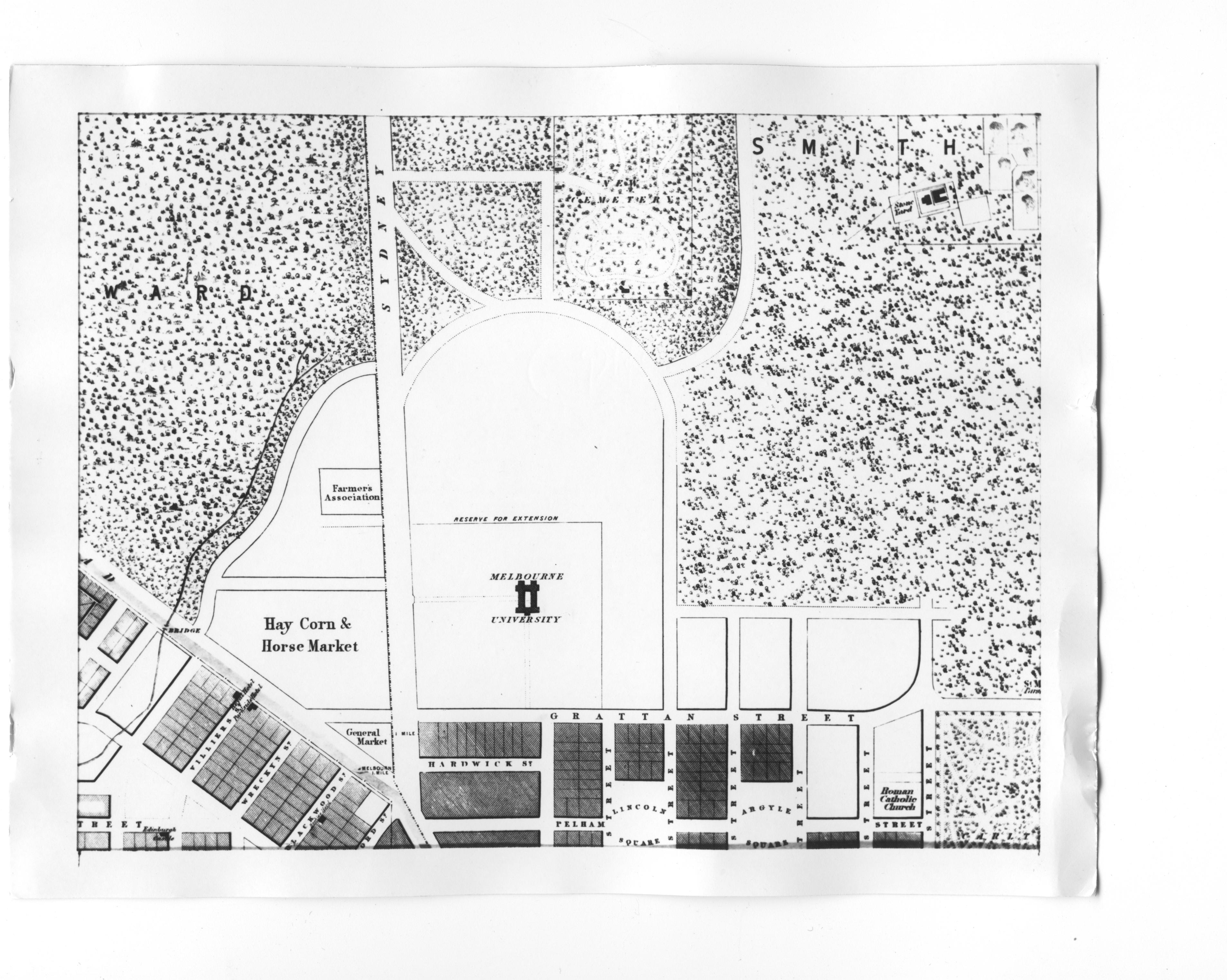About Keys to the Past project
This project was supported by the University's 150th Anniversary Small Project Program. First published 2003 University of Melbourne Archives
This is an illustrated, chronological guide to the history of the University of Melbourne based on the archival holdings of the University. In particular UMAIC, the image catalogue maintained by The University of Melbourne Archives. It covers the period from the establishment of the University in 1853 through to recent times.
The history of major institutions within a community resonate with significance for understanding the complexity and detail of that community's wider history.
This project was supported by the University's 150th Anniversary Small Project Program.
First published 2003 University of Melbourne Archives.

[Source: University of Melbourne Archives]
The administration of the University from the commencement to modern times exemplified a process of development from the simple to the complex. The first Registrar could easily be the first librarian also because there was so little for him to do in either capacity. But with the growth of the institution, the development of new schools, the increase in the number of students, the constitution of the Senate, the formation of an intimate relationship between the University and the system of primary and secondary education throughout the State, the office of Registrar became exceedingly onerous, and his staff large and hard worked.
The same is true of the teaching and research function of the University. The increase in complexity is no better exemplified than in the rapid partitioning of the territory covered by the foundation professor of Natural Science. By the time of this death in 1899 there were four professors covering various branches of science and a fifth added only seven years later. By 1975 there were over fifty professors of scientific disciplines (including clinical chairs) and these are not the limit of all that might be possible if budgets were generous enough. To chart the introduction of new departments in the University is not to measure growth alone, but also the flow of knowledge and expertise into Victoria and Australia, and the transmission of that knowledge to succeeding generations of students.
The University records include minutes of Council, Professorial Board and Faculties, series of correspondence, student records, plans and photographs. Personal papers of University staff may relate to their extramural activities and interests as well as to their teaching and research, for example, those of Sir James Barrett (oculist and University Chancellor), Professors Sir William Harrison Moore (Law), W.A. Osborne (Physiology) and Sir Samuel Wadham (Agriculture), R.M. Crawford and Geoffrey Blainey (History), Associate Professors Kathleen Fitzpatrick (History) and A. Lodewyckx (Germanic Languages), and Dr. Diana ("Ding") Dyason (History and Philosophy of Science). So too for administrators such as Raymond Priestleyor Dr Ray Marginson.
To these may be added the records of student bodies such as the Student Union, the Students' Representative Council and the Sports Union, and of myriad clubs and societies, and of staff organizations such as the Melbourne University Staff Association and University House.
The array of minute books in the archives of the University illustrate this process. The earliest minute book of the proceedings of the Council is a folio volume wherein is recorded in 134 printed pages the work of seven years; and very often the entry 'A quorum not being present no business was transacted,' is all that appears upon a page, save for the names of the four or five faithful men who did put in an appearance - Redmond Barry being nearly always the one who was present. But the later history of the University is contained in a regiment of minute books of Council, Senate, Professorial Board, Faculties, Schools Board, Finance Committee, Buildings Committee, Correspondence Committee, and several other records of special bodies. These leather-bound tomes, all thick and heavy, represent the abstract and brief chronicles of three quarters of a century's, activities, and in the tantalising curtness of their entries cover not a few comedies and dramatic incidents. Professor of History, Sir Ernest Scott, the first historian of the University, mid 1930s
The text and image selection was developed by Dr Carolyn Rasmussen and Dr Mark Richmond.
This project was supported by the University's 150th Anniversary Small Project Program.
First published 2003 University of Melbourne Archives.